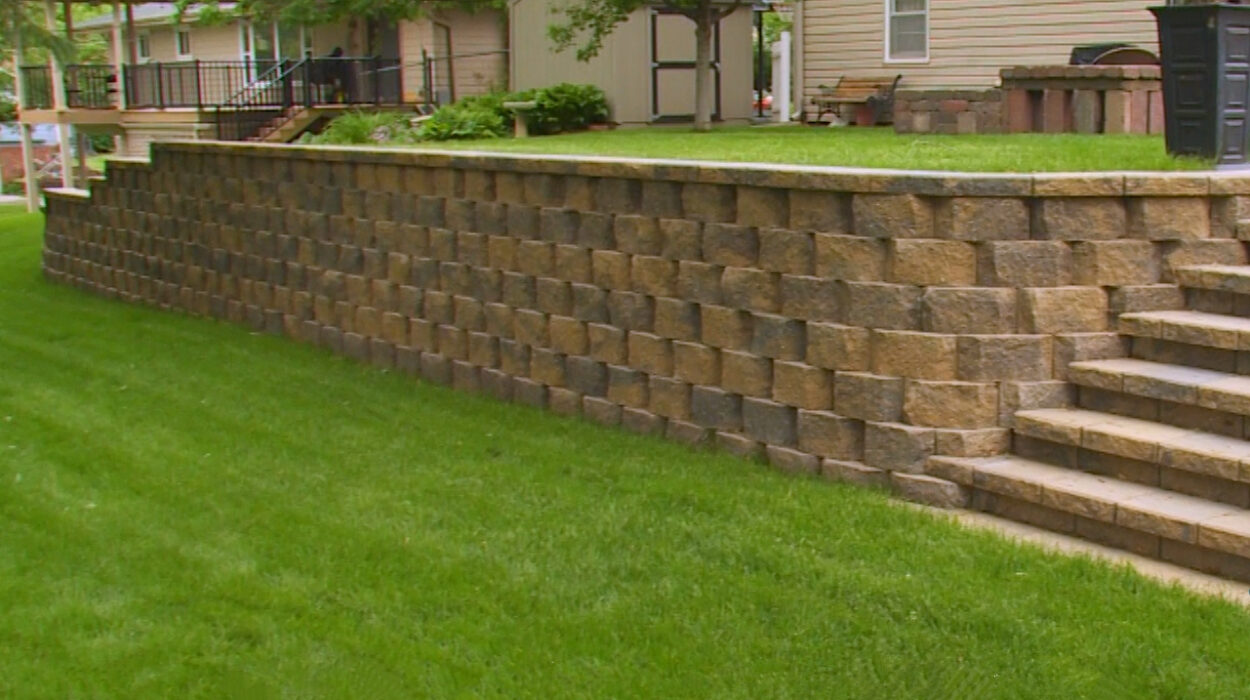Retaining walls are structures built to hold back soil, rock, or other materials on a slope. They are commonly used in landscaping and construction to create level areas, prevent erosion, and protect against landslides. In addition to these practical benefits, retaining walls can also add visual interest and value to your property. Here are some of the key benefits of using retaining walls on your property:
Erosion control: One of the primary functions of retaining walls is to prevent erosion by holding back soil and other materials on a slope. This is especially important in areas with heavy rainfall or irrigation, as the water can wash away soil and cause landslides. Retaining walls can help stabilize the slope and keep the soil in place, reducing the risk of erosion and protecting your property from damage.
Improved drainage: Retaining walls can also help improve drainage on your property by directing water away from your home and garden. When water flows down a slope, it can cause erosion and damage to your landscaping. By building a retaining wall, you can create a barrier that channels the water away from your property, protecting your plants and preventing erosion.
Increased usable space: Retaining walls can be used to create level areas on a sloped property, which can be especially useful if you want to add a patio, walkway, or garden bed. By building a retaining wall, you can create a flat surface that can be used for a variety of purposes, increasing the usable space on your property.
Increased property value: In addition to the practical benefits, retaining walls can also add value to your property by enhancing its appearance. Well-designed retaining walls can be a visually appealing feature that adds character and interest to your landscape. They can also define and separate different areas of your property, creating a sense of cohesiveness and order.
Versatility: Retaining walls can be made from a variety of materials, including wood, brick, concrete, and stone. This means that you have a lot of options when it comes to choosing the style and design of your retaining wall. You can choose a material that fits your budget and complements the style of your home and landscape.
Durability: Retaining walls are built to withstand the forces of nature, including heavy rain and wind. When properly constructed, retaining walls can last for many years with minimal maintenance. This means that once you invest in a retaining wall, you can enjoy the benefits for a long time.
Low maintenance: Retaining walls require minimal maintenance, especially when compared to other landscaping features such as gardens or water features. In most cases, all you need to do is keep the area around the retaining wall clean and clear of debris. If you choose a material that is resistant to weathering, such as concrete or stone, your retaining wall may require even less maintenance.
In conclusion, retaining walls in Toronto are a valuable addition to any property. They can help prevent erosion, improve drainage, increase usable space, and enhance the appearance and value of your home. Retaining walls are also versatile and durable, requiring minimal maintenance over time. If you are considering adding a retaining wall to your property, it is a wise investment that can bring a variety of benefits.


























